Repotting aloe vera is very simple, even for beginners. In this post, I’m going to explain everything you need to know about replanting your aloe vera, with step-by-step instructions.
If your aloe vera has outgrown its container or seems to be growing very slowly, then it’s time to repot it.
The process doesn’t require any special skills and can completely rejuvenate your plant.
This guide will answer all your questions about repotting aloe vera and explain exactly how to do it, step by step, so you’ll be able to keep your plant flourishing for years to come.
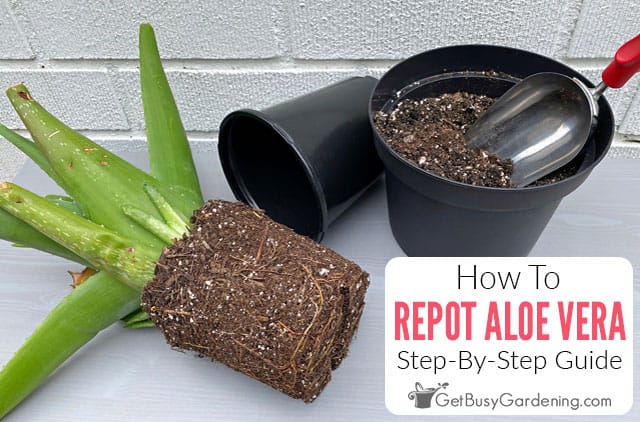
When To Repot Aloe Vera
The best time to repot aloe vera is in the spring or early summer. This is just before its period of active growth.
I don’t recommend doing it in the fall or winter, because it can trigger new growth which may become leggy and weak.
Avoid repotting a sick or bug-infested aloe vera, as the process is stressful for them and your plant may not be able to recover from the transplant shock.
If you just brought it home from the store, allow it to become accustomed to its new environment for several weeks before moving it to a new container.
How Do You Know When Your Aloe Vera Needs Repotting?
You’ll know your aloe vera needs repotting when you see signs it has become too big for its container.
You may notice roots emerging from the bottom of the pot or showing above the soil. You may even see that the container is bulging or has started to crack.
Here are some other signs that it’s time to repot your aloe vera plant…
- Its growth has slowed down or stopped altogether
- The container has become top-heavy and keeps falling over
- The soil won’t absorb water and it runs straight through
Related Post: How To Grow & Care For Aloe Vera Plants
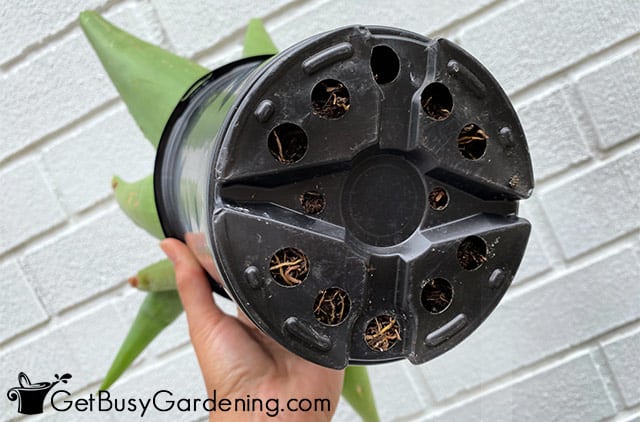
How Often To Repot Aloe Vera
Aloe vera will usually need repotting every 2 to 5 years, depending on the size of the container and the age of the plant.
It is quite happy to be slightly pot-bound, but should be replanted when it starts outgrowing its container.
I don’t recommend repotting aloe vera for cosmetic reasons, or on a set schedule, because the process can be stressful for the plant.
Instead it’s better to wait until it really needs it, or when you see the signs that it has become too big for its current container.
Related Post: How To Propagate Aloe Vera By Division
Preparing To Repot Your Aloe Vera
Before I explain the steps for repotting your aloe vera, let’s take a look at the best type of container to use. The right pot and soil will make it much easier for your plant to adjust to its new home.
Choosing A New Pot
Since aloe vera is a succulent, it doesn’t like much moisture. This means the new pot should have drainage holes in the bottom and only be 1 to 2 sizes bigger than the original.
A larger container will provide too much space and cause the soil to retain more water, potentially leading to root rot.
I recommend choosing a pot made from unfinished clay or terracotta, as these are porous and will allow moisture and air to move through the walls.
Best Soil For Repotting Aloe Vera Plants
The best soil for repotting aloe vera plants is a well-draining, sandy mix with a neutral pH, which you can test with a simple probe.
To keep things simple, I recommend buying a mix specially made for succulents and cacti.
Don’t use regular potting soil, as it holds too much water, which can be especially dangerous for your plant as it adjusts to the new container.

Tips For Repotting A Leggy Aloe Vera
If your aloe vera has become leggy and top-heavy, you can repot it into a larger container to help rejuvenate it and keep it upright.
Choose a container that’s taller than the current one, and position the rootball deeper so that much of the empty stem is covered by soil.
As it becomes established in the new pot, it will form roots along the buried part of the stem.
An alternative, though, is to try cutting off the top and rooting it. This is the option I recommend if yours is overly leggy, and you can read my step-by-step instructions for rooting aloe vera cuttings here.
What To Do After Repotting Aloe Vera
Once you have repotted your aloe vera plant, water it lightly to remove any air pockets and give it time to settle in its new container.
Keep an eye on it to see if any large holes develop in the soil as it settles, and add a little more if needed.
Healthy aloe vera plants don’t usually have any problems after repotting. But don’t panic if yours looks a little droopy at first.
If it doesn’t bounce back after a few days, it may be suffering from transplant shock. Check that you’re not overwatering, and avoid fertilizing it for at least one month.
Then just keep the plant in its regular spot and leave it alone until it has recovered.
Related Post: How To Water Aloe Vera Plants
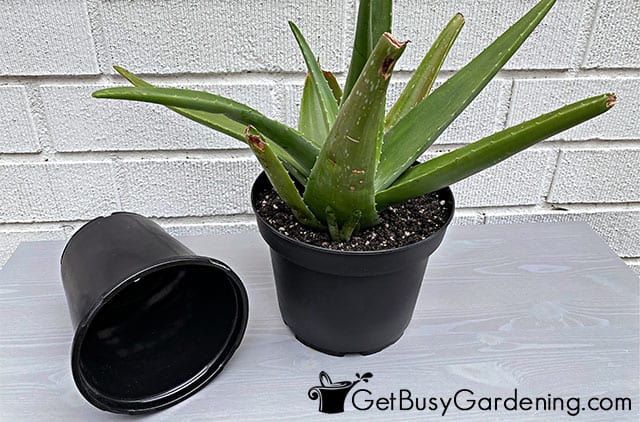
FAQs
Do aloe vera plants need big pots?
No, aloe vera plants don’t need big pots. A large container allows the soil to hold on to too much water, which can lead to root rot. Instead, choose a pot that is 2-4”, or one to two sizes, larger than the current container.
Do aloe plants like to be root-bound?
Aloe plants are happy to be a little root-bound, but it’s best to repot them once they start outgrowing their container, otherwise they may dry out too quickly.
Should you water aloe vera after repotting?
Yes, you should water aloe vera after repotting, unless the soil was already wet. Giving it a light drink will encourage it to settle in its new home.
If you want to learn all there is to know about maintaining healthy indoor plants, then you need my Houseplant Care eBook. It will show you everything you need to know about how to keep every plant in your home thriving. Download your copy now!
More About Aloe Vera
- How To Make Aloe Vera Gel At Home
- How & When To Harvest Aloe Vera
- How To Store Aloe Vera (Leaf Or Gel)
More About Repotting Plants
- How To Repot Plants: A Helpful Illustrated Guide
- How To Repot A Snake Plant
- How To Repot Succulent Plants
Share your tips for repotting aloe vera in the comments section below.
Step By Step Instructions
How To Repot Aloe Vera
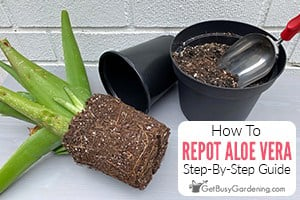
Learn how to repot your aloe vera plant. Discover my tips for replanting it successfully, including the best type of soil and container to use, and how to care for your plant in its new home.
Materials
- A clean pot
- Succulent potting soil
- Drainage netting (optional)
Instructions
- Choose a new pot - Pick a clean container only 1 to 2 sizes larger than the current pot and with drainage holes in the bottom. Unfinished clay or terracotta are ideal for potting aloe vera.
- Partially fill the new pot - Fill the bottom of the container with a well-draining, sandy soil or a mix specially designed for succulents. Add enough so the rootball will sit on top of it.
- Remove the aloe vera from the old pot - Turn the old pot upside down and carefully slide out the entire rootball. If it becomes stuck, gently tap or press on the sides of the pot. Don’t pull the leaves or stem, as this may damage them. You can slide a hand trowel between the inside of the container and the rootball if you’re having trouble removing it.

- Loosen the roots - Use your fingers to carefully loosen the roots if they are tightly bound or form a circular pattern. The aim is only to untangle them and straighten them out, so take care not to break them.

- Replant at the same depth - Plant your aloe vera at the same depth it was in the original pot, then fill in around it with fresh soil.

- Gently press down - Lightly press down the soil so that your plant feels secure, taking care not to pack it down too tightly.

- Moisten the soil - Unless the soil was already wet, moisten it to encourage your aloe vera to settle in its new home, allowing any excess water to drain completely from the pot.
Notes
- Always make sure your aloe vera plant is well hydrated before repotting.
- Never repot a brand new or an unhealthy aloe vera plant.
- Do not fertilize your newly repotted aloe vera plant for at least a month to lessen the risk of transplant shock.

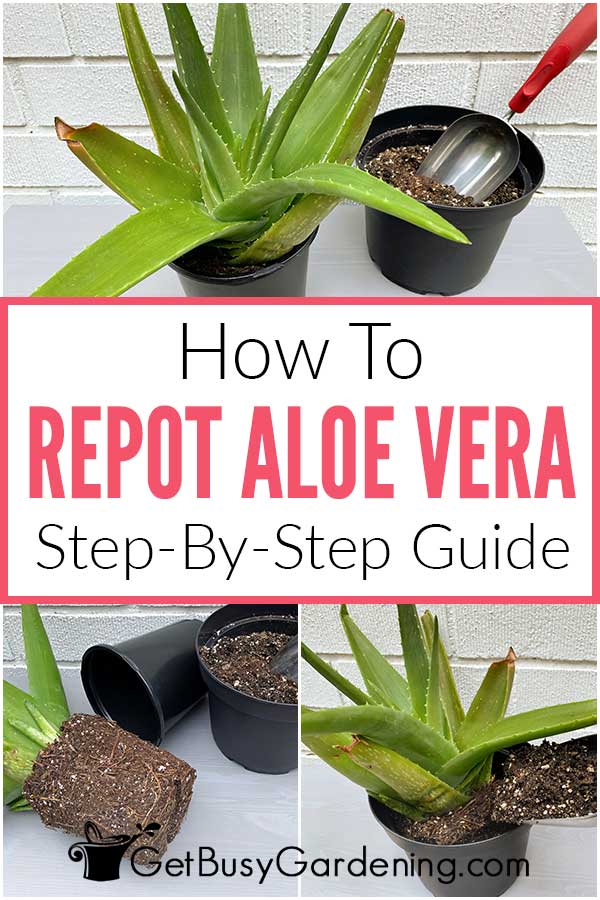
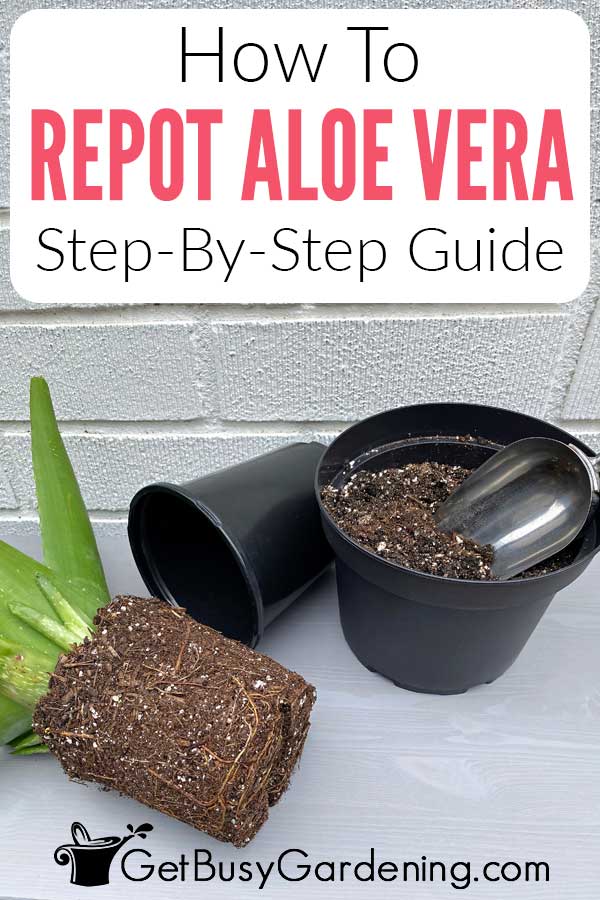


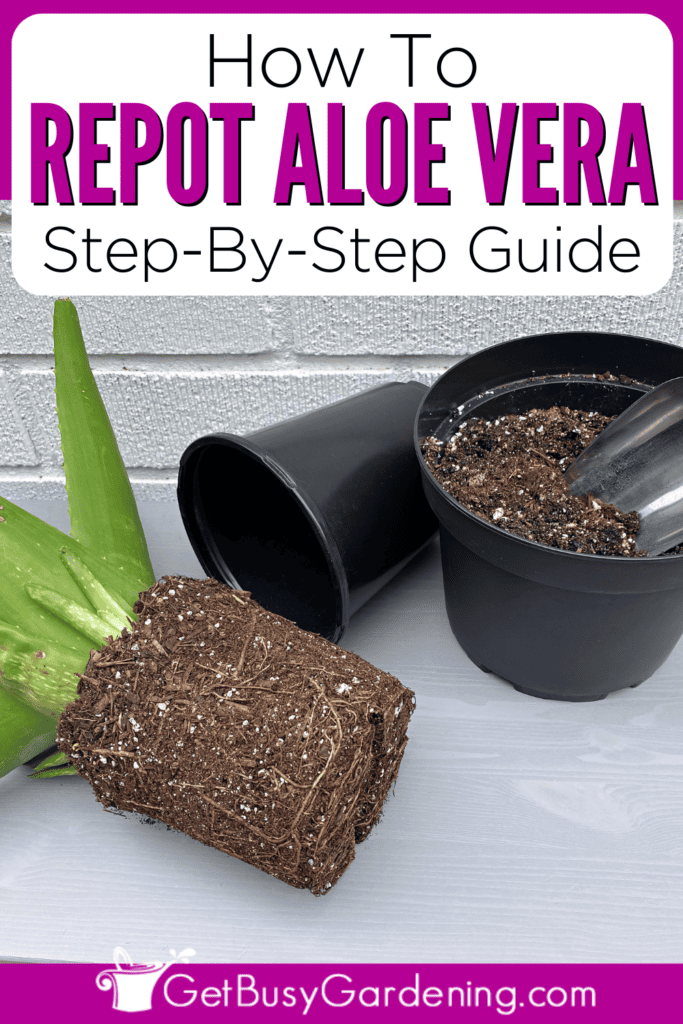
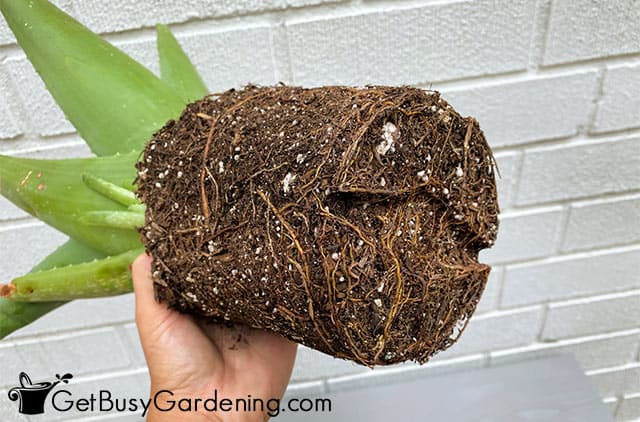

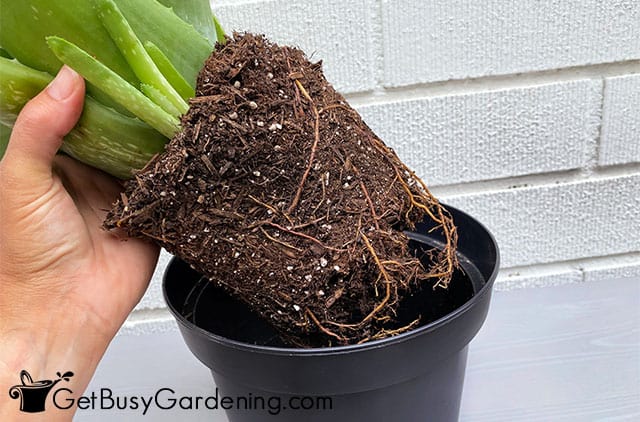
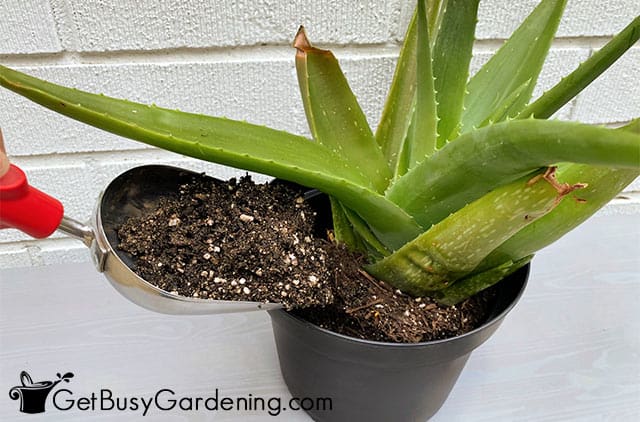

Leave a Reply